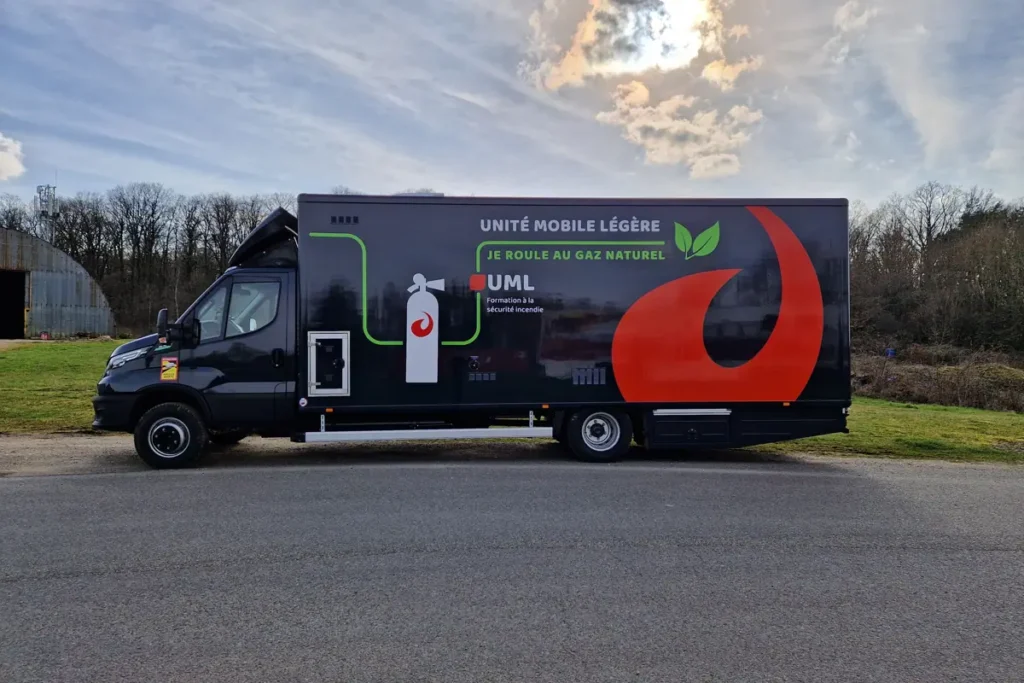How does fire training work?

Fire training is an essential and mandatory process for all companies. Its aim is to raise staff awareness of fire-related risks, fire extinguisher use and evacuation instructions. In addition to theory, this training includes practical exercises to help you be better prepared in the event of a disaster. By taking part, you are actively contributing to incident prevention and workplace safety.
The basics of fire training
Effective fire training rests on several essential pillars. Firstly, it includes instruction in the principles of combustion, enabling participants to understand how a fire starts and spreads. Participants also learn about the different classes of fire and the appropriate extinguishing agents.
Practical exercises are organized to familiarize trainees with the use of fire extinguishers. They learn how to handle this equipment in complete safety. Sessions include simulated evacuations:
- Identification of emergency exits
- Evacuation organization
The aim of this training is to develop appropriate reflexes in the event of a fire. A concrete example might be a simulation exercise in which each employee plays a specific role, such as a guide or line-holder, to ensure an orderly and rapid evacuation.
The importance of fire safety in the workplace
Corporate fire safety is an essential priority to protect employees and infrastructure. Every company needs to incorporate preventive measures to minimize risks. This includes installing effective fire safety systems, such as smoke detectors and fire extinguishers.
Staff training is also crucial, so that they know how to react quickly in the event of a fire. Regular evacuation drills are essential to ensure that all employees are familiar with the evacuation plan.
A good example is the integration of practical sessions where employees use fire extinguishers to control a fire outbreak. In addition, safety instructions must be clearly visible and accessible to all. These measures not only enhance safety, but also boost employees' confidence in their working environment.
Theoretical learning during training
Understanding fire and its risks
Fire is a complex chemical reaction based on three essential elements, often described as the fire triangle: fuel, oxidizer and activation energy. Understanding this principle helps us to better understand the risks associated with a fire.
Modes of fire propagation vary. Conduction transfers heat through solid materials. A common example is heat moving along a metal bar.
Convection, on the other hand, involves the transfer of heat through the movement of gases or liquids. This occurs when hot air rises, carrying toxic fumes with it.
Finally, radiation transports heat by electromagnetic waves, which can ignite distant objects. By recognizing these mechanisms, we can better anticipate and limit the risk of fire.
Fire prevention measures
To prevent fires, it's essential to combine technical and organizational measures. It's crucial that workplaces are well laid out to reduce risk. This includes easy access to emergency exits and clear signage.
Staff training is also essential. Regular evacuation drills enable employees to know their role and to act quickly in the event of an emergency.
Another important aspect is the installation of automatic detection and extinguishing systems. These may include :
- Smoke detectors
- Alarm systems
- Automatic fire extinguishers
All personnel must be familiar with the handling of fire extinguishers, and receive regular training to ensure their effectiveness. Last but not least, regular maintenance of safety equipment ensures that it functions properly when needed. These actions reinforce safety and resilience in the face of a potential disaster.
What to do in the event of a fire: safety instructions
In the event of a fire, it's vital to react quickly to ensure everyone's safety. Here are the essential instructions to follow:
- Remain calm and evacuate immediately. Use the stairs, never the elevator.
- Close doors and windows to slow the spread of fire.
- Alert other occupants and call for help: fire department on 18 or 112.
Identify your company's assembly point. This is a safe place to check that everyone is present, and to inform emergency services if anyone is missing. If you are trained, and only if the situation allows it, use the fire extinguishers to try to put out a small fire.
Finally, make sure you know about safe waiting areas for people with reduced mobility. These areas are designed to protect them until help arrives.
Practical learning during training
Using an extinguisher: theory and practical exercises
To use a fire extinguisher effectively, it's essential to follow a few key steps. Start by removing the safety pin. Next, aim the hose at the base of the flames, maintaining a safe distance of around 2-3 meters.
Then press firmly on the extinguisher lever to release the extinguishing agent. Use sweeping motions from left to right to cover the entire burning surface. Stay alert and make sure the flames are completely extinguished before moving away.
It's a good idea to practice these steps in hands-on training courses. These exercises enable you to familiarize yourself with the extinguisher, and gain the confidence to react effectively to the start of a fire. By mastering these gestures, you contribute to collective safety and disaster prevention.
Fire evacuation: procedures and practical exercises
Practical evacuation drills are essential to prepare employees to react effectively in the event of fire. These simulations help to familiarize participants with procedures and check their responsiveness. It is crucial to reproduce conditions close to reality to guarantee total immersion.
To optimize these exercises, several factors need to be taken into account. We recommend :
- Organize regular drills, at least twice a year.
- Designate people in charge, such as guides and greenhouses, to direct the evacuation.
- Use a variety of scenarios, such as smoke simulation, to test different reactions.
Finally, a post-exercise debriefing is necessary to analyze areas for improvement. This practice reinforces the safety and effectiveness of evacuation procedures. By applying these methods, companies ensure better protection for their employees.
Validation of fire training experience
Validation of acquired fire training skills is a way of recognizing skills that are often essential for advancement in a professional field. It is based on several criteria:
- Verification of theoretical and practical skills acquired during training.
- A real-life situation to assess the ability to react effectively to a fire.
- Continuous assessment by expert trainers, ensuring that each participant masters safety instructions and the use of equipment.
For example, an employee who has undergone fire training could be given additional safety responsibilities within his or her company. This validation not only ensures official recognition of skills, but also strengthens employers' confidence in their trained employees.
The role of employees trained in fire safety
Employees trained in fire safety play a crucial role in ensuring safety in the workplace. Their training enables them to quickly identify risks and take immediate action to prevent the spread of a fire.
They are often the first to alert the fire department, and to use first-aid equipment such as fire extinguishers or fire hose. Thanks to their expertise, they know how to effectively direct the evacuation of the premises, supervising the movement to safe assembly points.
These employees are also responsible for raising awareness of good fire safety practices among their colleagues, ensuring that essential knowledge is continually disseminated throughout the company. By adopting a proactive attitude, they help to create a safer working environment for all.

